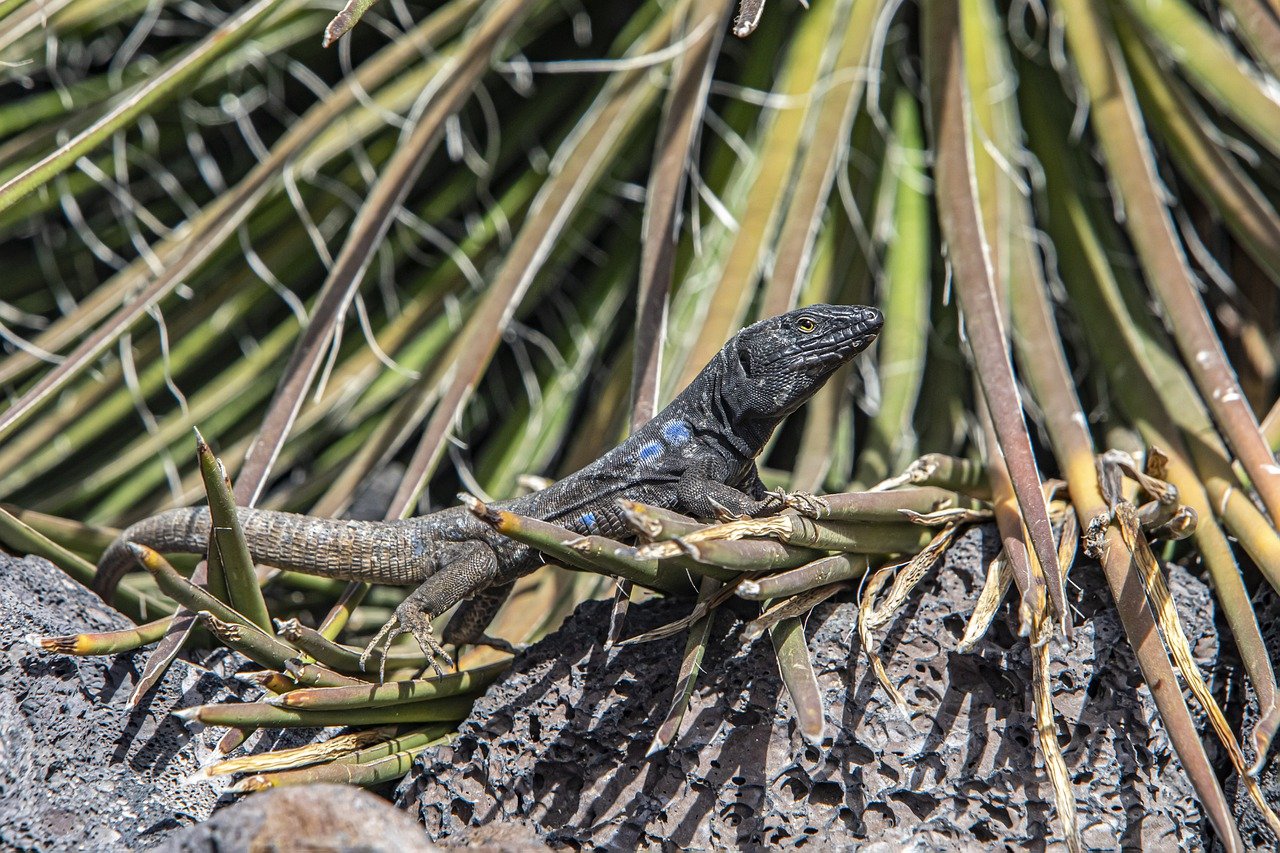The Western Canary lizard (Gallotia galloti) is a species of lizard endemic to the Canary Islands, specifically the islands of Tenerife and La Palma. Here are some key details about this fascinating reptile:
Appearance
- Size: Adult Western Canary lizards can reach lengths of up to 40 cm (16 inches), including their tails. Males are typically larger than females.
- Coloration: Males are often more brightly colored, exhibiting blue spots along their sides and sometimes a bluish hue on their heads and throats. Females and juveniles are usually brown or gray with less pronounced markings.
Habitat
- Range: Gallotia galloti is found on Tenerife and La Palma in the Canary Islands.
- Environment: They inhabit a variety of environments, including coastal regions, shrublands, forests, and even volcanic landscapes. They are highly adaptable and can often be seen basking on rocks or walls in both natural and urban areas.
Behavior
- Diet: Western Canary lizards are omnivorous. They primarily feed on insects, fruits, flowers, and leaves. Their diet can vary based on seasonal availability of food sources.
- Reproduction: Breeding typically occurs in the spring and early summer. Females lay a clutch of eggs in a sheltered location, such as under rocks or in burrows. The eggs hatch after several weeks, with the young being independent from birth.
- Activity: These lizards are diurnal, meaning they are active during the day. They are known for their agility and speed, often darting quickly to escape predators.
Adaptations
- Camouflage: Their coloration helps them blend into their rocky and vegetative surroundings, providing protection from predators.
- Tail Autotomy: Like many lizards, Gallotia galloti can shed its tail if caught by a predator, allowing the lizard to escape. The tail will eventually regrow, though it may not be as long or as perfectly formed as the original.
Conservation
- Status: The Western Canary lizard is currently not considered endangered and has a stable population. However, habitat destruction and the introduction of non-native species could pose future threats.
- Protection: The species benefits from the protected status of many natural areas within the Canary Islands. Conservation efforts focus on preserving their natural habitats and maintaining the ecological balance of the islands.
Ecological Role
- Ecosystem: Gallotia galloti plays an important role in its ecosystem as both a predator and prey species. It helps control insect populations and serves as a food source for larger predators, including birds and mammals.
- Seed Dispersal: By consuming fruits, these lizards also contribute to seed dispersal, aiding in the propagation of various plant species within their habitat.
The Western Canary lizard is a vibrant and vital component of the Canary Islands’ biodiversity. Its adaptability and role in the local ecosystem underscore its importance to the natural heritage of these unique islands.
Visited 573 times, 31 visit(s) today
Views: 747
Subscribe to the newsletter:
